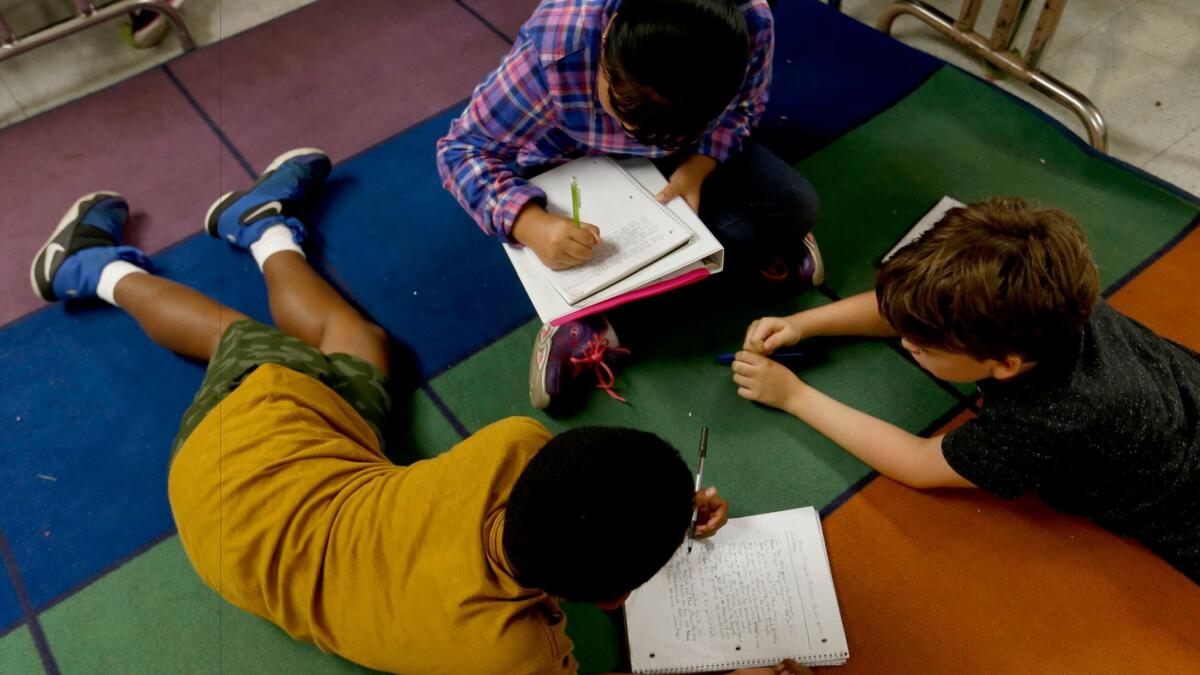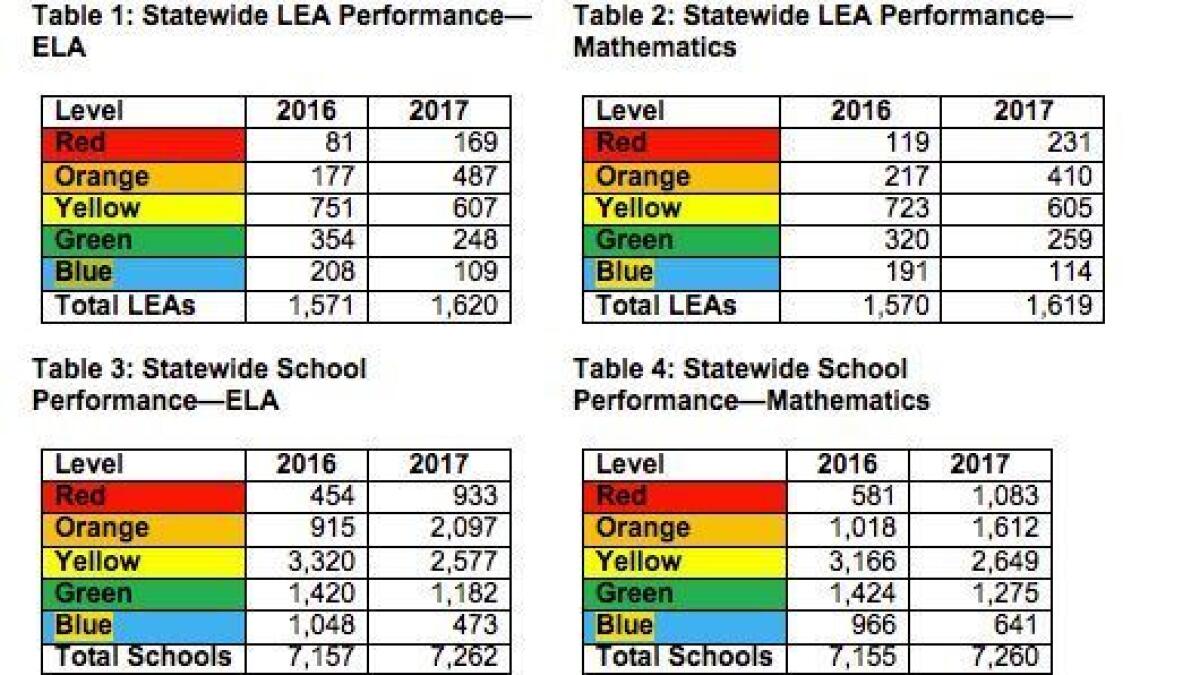Q&A: Would changes to California’s color-coded school ratings lower the bar?

- Share via
After seeing this year’s standardized test scores, state education officials want to change the way those scores translate to school ratings — in a way that likely would make more schools look better.
The statisticians and administrators advocating for the change say it’s necessary as they calibrate the state’s new color-coded school accountability system.
The California State Board of Education will take up this issue — and other proposed changes — in its meeting Wednesday. But what officials call a technical tweak, education advocates see as a lowering of expectations for California’s students.
“We should not be changing expectations for schools and districts without more data and understanding,” a coalition of 14 education organizations wrote in a letter to the board.
These are the three proposed changes we’ll be watching.
1) Fewer schools would be characterized as ‘red’ this year
The changes would alter the California School Dashboard, a new education rating tool unveiled in preview form this year. It’s supposed to provide a more holistic sense of how a school is doing.
The Dashboard translates test scores into colors — blue for the best, red for the worst — and presents numerous color-coded measures of school success, including graduation and ultimately suspension rates as well as college and career readiness.
The data underlying the Dashboard are supposed to be updated soon to reflect a new round of testing from 2017, in which most schools stagnated in both English language arts and math.
In anticipation of that update, education officials say a change is necessary because many schools that saw only small changes to their scores would go up or down by two colors from one year to the next. The state wrote a technical memo in the meeting’s agenda explaining that changing the rubric would mitigate this volatility.

Some critics say what is being called a technical tweak would constitute a major policy change and should be treated as such. The letter from the coalition says changing the designations could lead to a slippery slope in which the system is changed every time test scores do.
“It appears to subvert the accountability system and risks undermining public confidence,” the group wrote.
Carrie Hahnel, deputy director of research and policy at the Education Trust-West, an advocacy group in the coalition, said the change amounts to lowering the bar. “More districts will be green and fewer will be red,” she said. “But think about the message that sends when California is among the lowest states in national assessments.”
State officials vehemently disagreed. “It by no means lowers the expectations,” said Jenny Singh, administrator of the state Department of Education’s academic accountability unit. “What we release … doesn’t impact what you do in your classroom from day to day.”

2) A loophole that made some underperforming schools look good would be closed
When the Dashboard was released, a Times analysis found that it graded schools on a curve — and that it was possible for schools in which the majority of students didn’t reach math benchmarks to be rated green for academics — the second-highest ranking.
In response to the analysis and conversations with education groups, the state is proposing to make that impossible.
3) The definition of ‘maintaining’ would be changed
A perk of the new system is that it takes into account not just performance on tests but improvement over time. But the initial version of the Dashboard made it possible for a school to improve but be classified as “maintaining.” A proposed new formula tries to make this designation more fair.
The coalition praised that proposal, which would weight movement in either direction equally, so schools or districts get credit for making solid improvements.
Currently, a school is maintaining if its score from year to year is within the range of one lost point to seven gained points. The new formula would change that range from a loss of three points to three points gained.
Twitter: @joy_resmovits
Sign up for Essential California
The most important California stories and recommendations in your inbox every morning.
You may occasionally receive promotional content from the Los Angeles Times.








